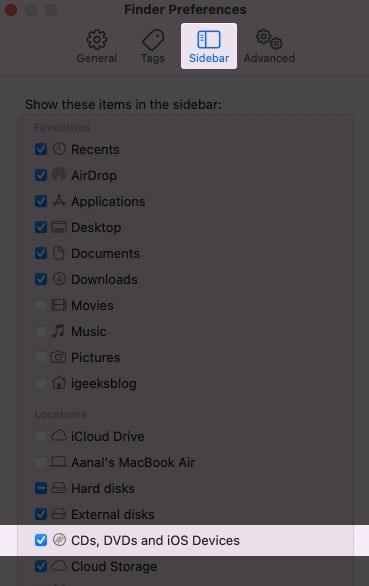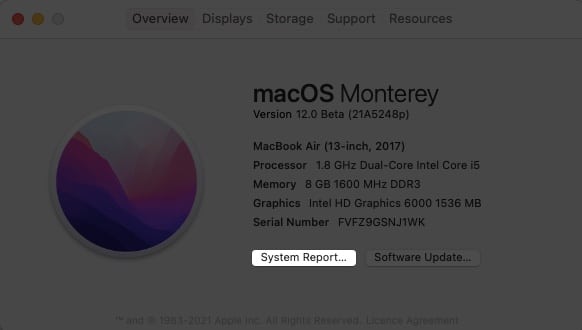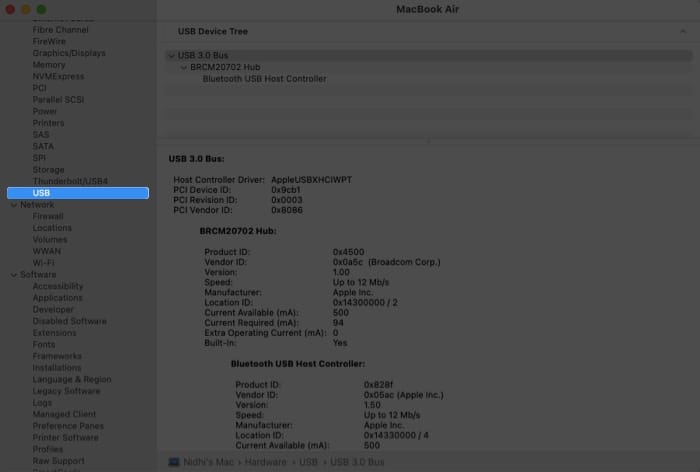1. Unlock your iPhone
When you connect your iPhone to the Mac via a USB cable, Finder won’t recognize it if the iPhone is locked. Hence, ensure you are connecting an unlocked iPhone. If the issue persists, move on to the next step.
2. Unplug your iPhone
Although simple and easy, unplugging and plugging back your iPhone is effective in most cases. It gives your device a chance to form a fresh connection with Mac. There are chances that Finder will recognize your iPhone this time. If it still doesn’t show up, proceed to the next step.
3. Enable CDs, DVDs, and iOS Devices on your Mac
When you connect your iPhone to the Mac, the iPhone generally shows up in the sidebar under the Location section. However, ensure that the CDs, DVDs, and iOS Devices option is enabled if it doesn’t appear. To do so, Now, your iPhone should show up in Finder. If it doesn’t, we have more fixes!
4. Restart your iPhone and Mac
If you haven’t rebooted your device in a long time, restarting your iPhone and Mac might help you fix the issue. So, don’t hesitate to give it a chance.
How to restart an iPhone
On iPhone X and later: Press and hold either of the volume buttons and side button until you get the power off slider. Then, swipe the power off slider to shut down the device. Now, wait for a minute or two, press and hold the side button again to turn it back on.On iPhone 8 and earlier: Press and hold the side button and drag the power off slider to turn off the device. After some time, press and hold the side button to turn it on.
How to restart a Mac
5. Update your iPhone and Mac
Sometimes, it could be that the software update is buggy. This may prevent your iPhone from showing up in Finder. Apple releases new software updates to fix those bugs. Hence, see if the new software update is available and install them.
How to update iPhone
How to update Mac
6. Select “Trust This Computer” when asked
Whenever you plug your iPhone into Mac for the first time, you will be prompted to trust this computer. You need to select Trust so that your Mac can sync with your iPhone and access your data for backups. If you selected Don’t Trust, your iPhone wouldn’t connect to the Mac. Hence, ensure that you select to Trust on your iPhone in the pop-up that appears.
7. Check the USB connection on your Mac
If your iPhone is still not showing up in Finder, there could be some problem with the USB connection. So check it too once. Under USB Device Tree, you should see your iPhone or iPad. If it doesn’t show up here, there could very well be a connection issue. Try using another cable. Also, try to plug the cable in another port. I hope this article helped fix your problem of the iPhone not appearing in Finder. However, if the issue persists, unfortunately, it may be a hardware issue. You must contact Apple Support. Facing any more issues on your iPhone or Mac? Share them in the comments below. We will try our best to fix them. You may also find the below articles helpful:
How to change font size in Finder on Mac (Easiest way)How to bookmark a folder in Finder on MacAdd iCloud Drive to Finder Sidebar on MacFinder tips and tricks every Mac user must know







